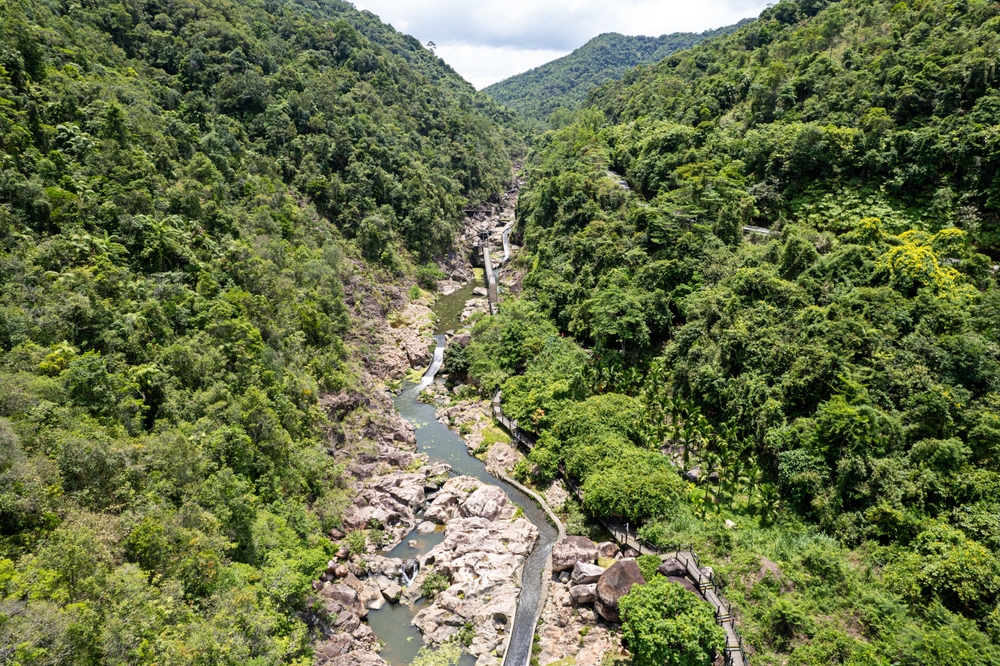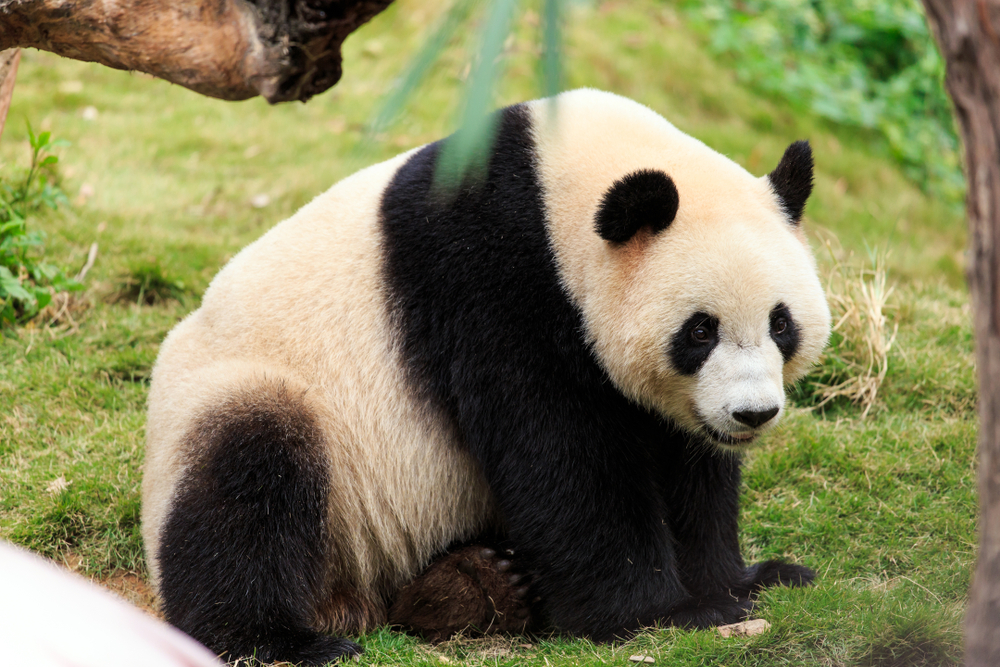Hainan Tropical Rainforest Overview
Hainan Tropical Rainforest National Park, located on Hainan Island in southern China, covers an impressive area of approximately 674 square miles (1,745 square kilometers). Known locally as 海南热带雨林国家公园 (Hǎinán Rèdài Yùnlín Guójiā Gōngyuán), the park was established to protect one of the world’s most biodiverse and ecologically significant tropical rainforests. This unique ecosystem features a lush, dense canopy interwoven with winding rivers, towering mountain ranges, and serene valleys. The park’s terrain varies from steep hillsides to low-lying wetlands, making it a haven for both flora and fauna.
The vegetation in Hainan Tropical Rainforest National Park is extraordinary, ranging from ancient hardwood trees to rare orchids and an extensive variety of ferns and shrubs. The dense canopy shelters the forest floor, creating an environment of high humidity and constant shade, which supports the growth of numerous endemic species. The park is home to several unique tree species, including the Hainan ironwood and dragon’s blood tree, both of which play critical roles in the ecosystem’s balance.
The park is a sanctuary for many rare and endangered species, including the critically endangered Hainan gibbon, considered the rarest primate on Earth with fewer than 40 individuals left in the wild. Other notable wildlife includes clouded leopards, binturongs, pangolins, and a variety of bird species such as hornbills and kingfishers. The vibrant biodiversity also extends to amphibians, reptiles, and insects, many of which are found nowhere else.
Visitors to the park can engage with its beauty through guided tours, trekking trails, and eco-tourism initiatives designed to educate and immerse guests in the natural environment. Highlights include canopy walks that offer a bird’s-eye view of the rainforest, river kayaking, and opportunities to observe wildlife in its natural habitat. Cultural tours also introduce visitors to the local Li and Miao ethnic communities, who have lived in harmony with the forest for centuries and offer insights into traditional knowledge and sustainable practices.
Despite its pristine beauty, the park faces challenges such as habitat fragmentation, climate change, and pressures from tourism. Conservation efforts focus on protecting the Hainan gibbon and restoring degraded habitats. Partnerships between the government, local communities, and environmental organizations have been instrumental in the park’s preservation. Education and sustainable tourism are critical strategies employed to ensure the park’s long-term survival.
Hainan Tropical Rainforest National Park is a breathtaking showcase of biodiversity and natural beauty. Its lush landscapes, rare wildlife, and rich cultural heritage make it a must-visit destination for nature enthusiasts and conservation advocates alike. The park stands as a testament to the importance of preserving our planet’s most precious ecosystems for future generations.













































































